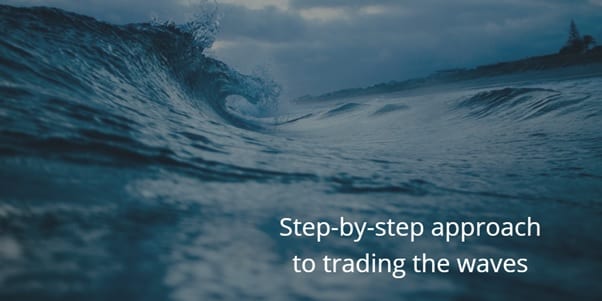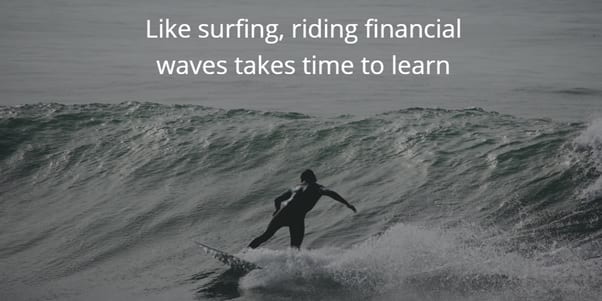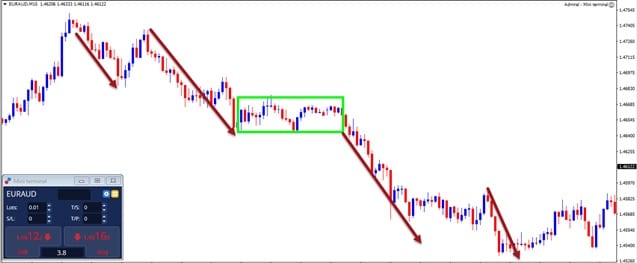The following article was written by Jens Chrzanowski, Member of the Management Board of Admiral Markets Group AS.
Hello,

Jens Chrzanowski, Admiral Markets
Many Forex and CFD traders try to apply the Elliott Wave Theory for a short while… but the majority quickly moves on to the next indicator or tool. Why does this happen? Most traders understand the theory to some point but find it difficult to apply it to real trading situations. Sounds familiar?
Our goal is to provide a practical solution to traders who want to give wave analysis a chance. This weekly article, based on an article by our analyst colleague Chris Svorcik, explains a simple step-by-step approach that allows traders to gradually start using wave analysis. Please note that this is not a guide to the Elliot Wave Theory itself!
Why Forex & CFD Traders Struggle with Wave Analysis
Each trader has their own ups and downs when applying wave analysis. However, most traders give up on wave analysis due to one of the following reasons (the solutions will follow):
- Not knowing the Elliot Wave Theory → learn theory;
- Not being able to apply the theory on charts → build experience;
- Insecure about their wave application (wave count) → build experience;
- Trading wave count too soon without experience → step-by-step process;
- Applying a full wave count from the start → step-by-step process.
The biggest problem is that traders expect too much too soon from wave analysis (point 4 and 5).
They immediately rely on waves for all their trading decisions. However, wave analysis is most useful for understanding the market structure and as a confluence tool – especially, when starting to use waves for trade decisions. Applying wave analysis is a step-by-step process that cannot be rushed.
The second biggest problem is that traders feel insecure about their wave approach. Logically, it takes time to build up experience with applying waves.
Traders simply cannot expect to take the best wave trades right away from the start.
The Solution: Apply Trading Waves Gradually
As we often point out in our live webinars, there are roughly five steps in a trader’s transition from not applying waves to fully labelling waves on multiple time frames.
Let us be clear that one step is not better than the other. They are all equal – Forex & CFD traders need to find the one that suits them best!
- Not using waves, swing, or impulse & correction;
- Using swings, impulse & correction;
- Looking at multiple swings;
- Partial wave count labelling;
- Full wave count labelling.
First Steps in Using Waves
The best place to start is to analyse whether a swing (a group of candles) is moving:
- as an impulse (momentum); or
- as a correction (corrective).
This is the first key step when analysing waves because traders are decomposing the story and psychology behind the moves.
For instance:
- a bullish corrective swing → We could expect a choppy upside until a bigger resistance appears (depending on the market structure);
- a bearish momentum swing → We could expect a shallow pullback and momentum continuation that pushes beyond support (depending on the market structure).
A trader’s ability to understand the market structure will increase just by learning what impulse and correction are and knowing how to recognise them.
The next step is to connect multiple swings and understand the flow behind them.
By analysing multiple swings instead of just one, traders can build a larger understanding of the market structure.
For example:
…the current swing is the start of a bearish impulse, and the previous two swings were bearish impulse and bullish correction.
…a trader could conclude that a continuation of the bearish momentum is likely.
Source: MetaTrader 5 Trading Platform
Now is the Right Time to Start Labelling
Usually, Forex & CFD traders start with the labelling waves, but the most important step is to understand momentum and correction.
Practise this first with dedicated engagement before moving on.
Once you see your experience grow, it’s time to add and label wave counts:
- Add the wave count when the wave structure is clear (find logical pieces and skip difficult parts);
- Monitor whether the wave count, invalidation levels, and confirmation levels worked out and learn from the process;
- Learn from feedback to gain experience;
- Start adding wave counts when it’s useful and beneficial (either partially or fully).
Realise that wave analysis is not the best method when used as a stand-alone wave trading strategy (unless someone has huge experience).
Wave analysis is much better as a confluence tool. We firmly believe that waves are valuable for all Forex & CFD traders, in particular for:
- better understanding the market structure;
- identifying the trend;
- finding confluence or deviations;
- spotting confirmation and invalidation levels in your analysis.
However, it remains an art and science that is not suitable for every trader.
If you have tried wave analysis for some time and still don’t know if that’s helping you, only then it’s time to say adieu to this form of analysis and move on!
Final Thoughts
What is your view on waves? Do you think that our cheat sheet will help you learn wave analysis? For more exact details on wave counts, don’t miss our daily wave analysis!
See you next week!
Do you have any feedback, concerns, requests, maybe even compliments? I’d love to hear them. Please contact me via: [email protected].
Trading on margin carries a high level of risk, and this article should not be seen as advice or solicitation to buy or sell, but written for informational purposes.



